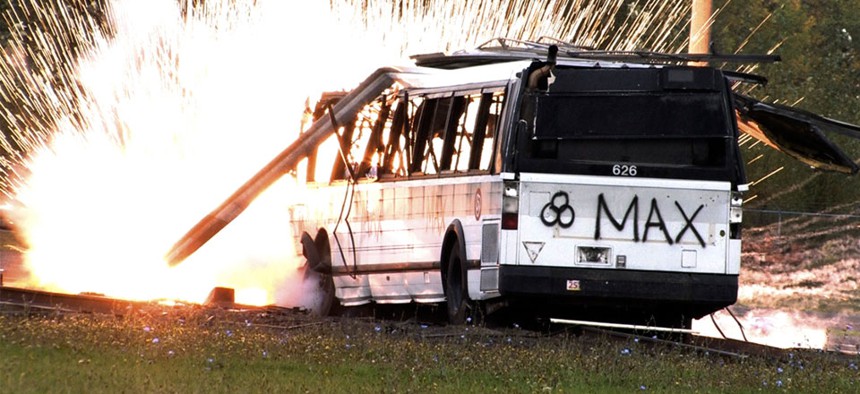U.S. Confirms Effort to Phase Out Selected 'Dirty Bomb' Materials

A simulated radioactive "dirty bomb" explodes on a bus which was used to test the ability of federal and local agencies to deal with a real terrorist attack. Rick Bowmer/AP File Photo
Paired with conventional explosives, radiological materials used in medicine could potentially be dispersed over a wide area, creating dangerous contamination.
U.S. officials confirmed on Monday that they will launch an effort to help limit the prospect of "dirty bomb" attacks by working to phase out certain radiological materials.
"The United States intends to establish an international research effort on the feasibility of replacing high-activity radiological sources with non-isotopic replacement technologies, with the goal of producing a global alternative by 2016," states a U.S. "progress report," released Monday at the Nuclear Security Summit in the Netherlands.
This unilateral "house gift" that U.S. officials offered at the biennial gathering of world leaders follows calls from nonproliferation advocates for the United States and United Kingdom to lead an effort that could enable a global phase-out of selected radiological materials used in the medical field.
As Global Security Newswire reported last week, a report from James Martin Center for Nonproliferation Studies suggested that hospitals and blood banks move away from the use of cesium chloride. The radioactive substance presently is used for irradiating blood prior to transfusion, in order to prevent a rare but lethal complication known as graft-versus-host disease.
Paired with conventional explosives, such substances could potentially be dispersed over a wide area in a dirty bomb attack, creating dangerous contamination.
The report says blood could be irradiated instead with electromagnetic radiation, such as X-rays or ultraviolet light, or by linear accelerators that many hospitals already have on hand for cancer treatments.



